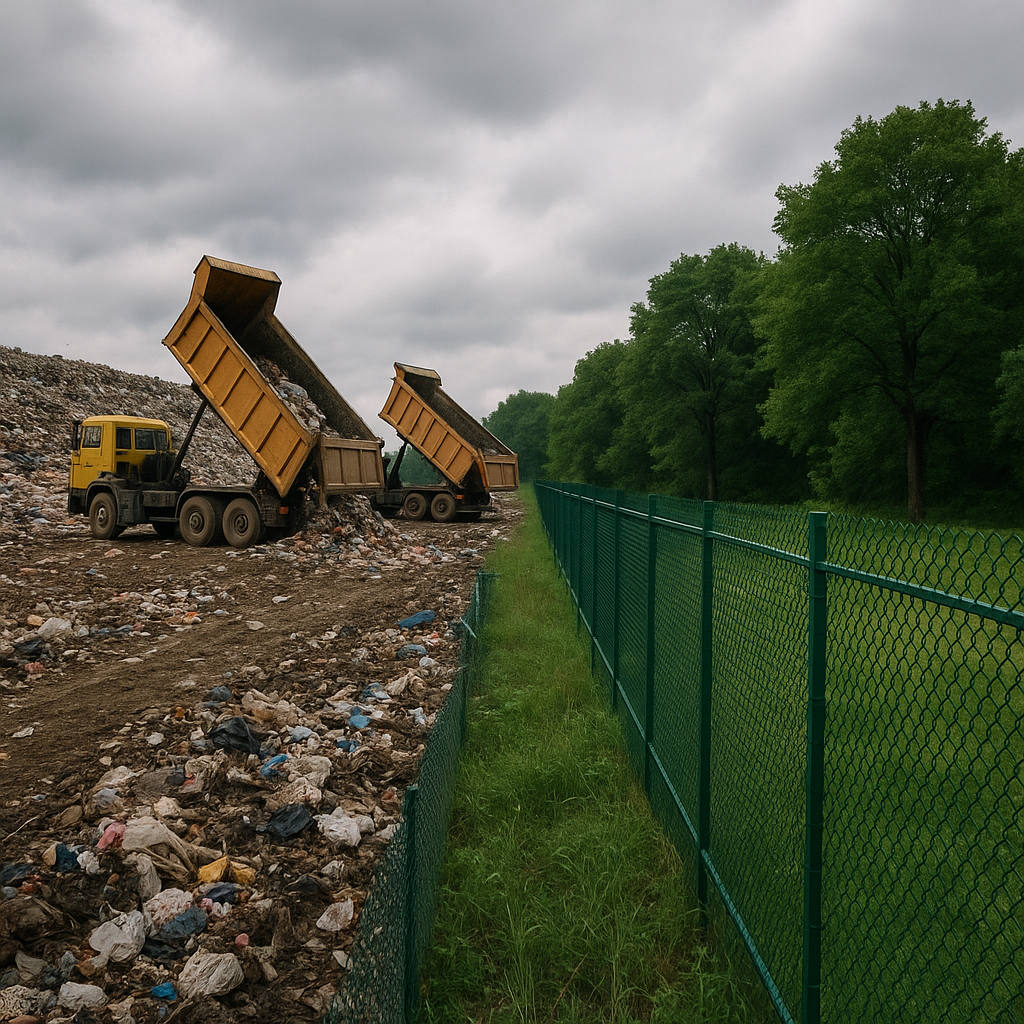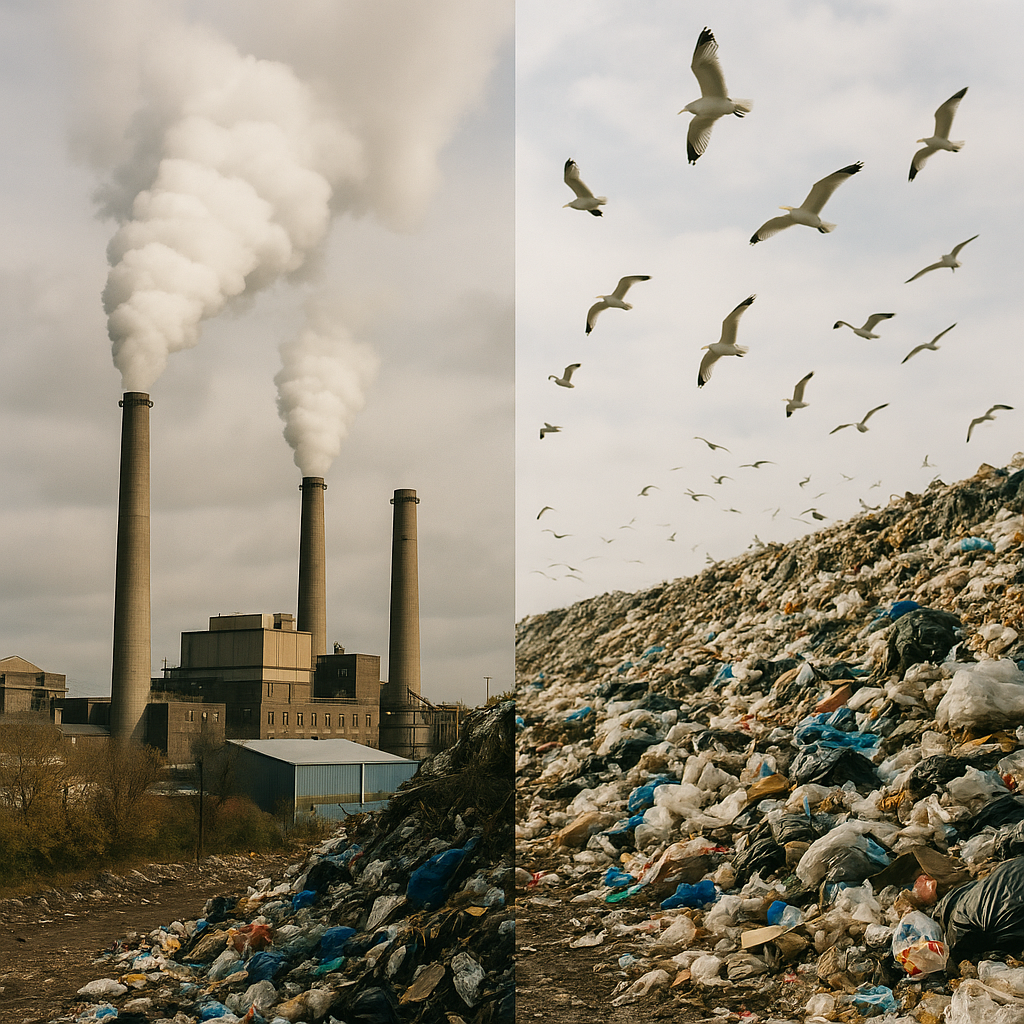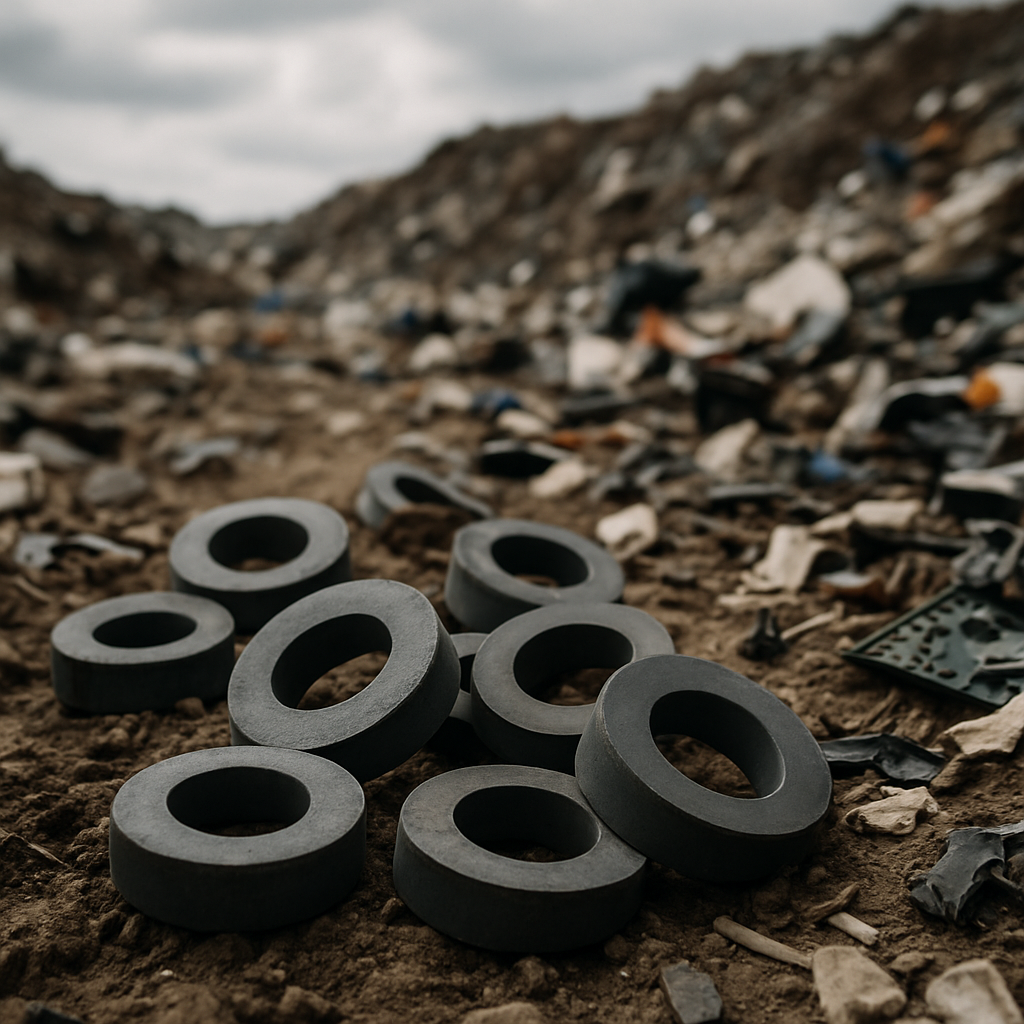5901 Botham Jean Blvd, Dallas, TX 75215
Incineration vs Landfill: Which Waste Disposal Method is Better?
November 27, 2025Every year, Americans generate more than 240 million tons of municipal solid waste. This staggering volume of trash from households, schools, hospitals, and businesses must go somewhere. The choice between waste disposal methods is a complex decision with major environmental and economic consequences.
Landfilling involves burying trash in designated areas lined with protective barriers to prevent soil and groundwater contamination. Incineration is a process of controlled combustion where waste materials burn at high temperatures. This process reduces them to ash and gaseous byproducts.
Both waste treatment methods have significant pros and cons when we consider environmental impact, greenhouse gas emissions, and long-term sustainability. Understanding the trade-offs in the incineration vs landfill debate helps municipalities and waste management providers make informed decisions about the most effective approach to municipal solid waste disposal.
What are the Pros and Cons of Landfills?

Landfills remain one of the most widely used waste disposal methods globally, serving as a critical component of integrated waste management systems. Understanding their advantages and disadvantages helps us make informed decisions about waste management strategies and guides municipalities toward more sustainable practices.
Advantages of Landfills
Modern landfills offer several practical benefits that explain their continued use in waste management infrastructure:
- Cost-effective waste management: Landfills require significantly lower upfront capital investment compared to waste-to-energy facilities or advanced recycling technologies. This makes them accessible for communities with limited budgets.
- Versatile waste acceptance: Unlike recycling facilities that require sorted materials, landfills can accommodate diverse waste streams including construction debris, non-recyclable materials, and certain hazardous wastes when properly engineered.
- Energy recovery potential: Modern municipal landfills capture methane gas produced during waste decomposition and convert it into renewable energy, reducing greenhouse gas emissions while generating electricity.
- Land reclamation opportunities: Closed landfills can be transformed into parks, recreational areas, or other community spaces, effectively reclaiming previously unusable land for beneficial purposes.
- Employment generation: Landfill operations create jobs in waste collection, transportation, site management, and environmental monitoring, supporting local economies.
These advantages make landfills an integral part of waste management planning, particularly for non-recoverable materials that cannot be recycled or composted.
Disadvantages of Landfills
Despite their practical benefits, landfills present significant environmental and operational challenges that we must address:
- Groundwater contamination risks: Leachate formation from decomposing waste can migrate through soil layers and contaminate underground water sources, potentially affecting drinking water supplies and requiring long-term monitoring.
- Methane emissions: Organic waste decomposition produces methane, a greenhouse gas approximately 25 times more potent than carbon dioxide. Without proper gas capture systems, these emissions contribute significantly to climate change.
- Air quality impacts: Landfills release various air pollutants including volatile organic compounds, hydrogen sulfide, and particulate matter that can affect respiratory health in surrounding communities.
- Odor management challenges: Decomposing organic matter generates persistent odors that can impact quality of life for nearby residents and create community relations issues.
- Extensive land requirements: Landfills consume large areas of land that could potentially be used for other purposes, and finding suitable sites becomes increasingly difficult as communities grow.
- Long-term liability: Even after closure, landfills require decades of monitoring and maintenance to ensure environmental protection, creating ongoing financial obligations for operators and communities.
These environmental risks underscore the importance of implementing comprehensive waste diversion strategies, including recycling and composting programs, to minimize landfill dependence.
The balance between landfill advantages and disadvantages varies significantly based on site design, operational practices, and regulatory oversight. Modern engineered landfills with proper liner systems, leachate collection, and gas capture technologies can mitigate many environmental concerns. However, the most effective approach combines landfilling with robust recycling programs and waste reduction initiatives to minimize environmental impact while maintaining cost-effective waste management solutions.
Which Method Has a Greater Environmental Impact?

Research consistently shows that incineration creates significantly more environmental harm than landfilling. Multiple studies analyzing air pollution data reveal that incinerators generate substantially higher levels of toxic emissions compared to landfills.
The most striking difference appears in nitrogen oxide emissions. Incinerators produce nitrogen oxides at rates 105 times higher than landfills. These compounds trigger asthma attacks and contribute to smog formation in surrounding communities.
When facilities burn 100 tons of municipal solid waste, 70 tons transform into air pollution while 30 tons become toxic ash. This ash still requires landfilling, meaning incineration doesn’t eliminate the need for landfills. Instead, it adds an extra pollution step to the waste management process.
Global Warming Impacts
Climate analysis reveals that incineration produces worse global warming effects than landfilling. While landfills generate methane, a potent greenhouse gas, incineration’s overall carbon footprint remains higher. Studies accounting for trucking emissions to distant landfills still favor landfilling over burning waste.
Incineration immediately releases all carbon content into the atmosphere as carbon dioxide. In contrast, much of the carbon in landfilled materials remains sequestered. Only organic materials like food scraps and yard waste produce significant methane emissions through decomposition.
Air Quality and Toxic Emissions
Incinerators release multiple categories of harmful pollutants into the air. The combustion process generates particulate matter, dioxins, and heavy metals that directly impact human health. These toxic emissions concentrate in communities near incineration facilities.
Pennsylvania data comparing incinerators to landfills shows incinerators produce 80% more greenhouse gases and 60% more health-damaging pollution overall. Particulate matter emissions from incinerators reach five times the levels of landfills.
Dioxins represent some of the most toxic chemicals known to science. These compounds form during the incineration process and concentrate in both air emissions and ash residue. Landfills don’t generate these dangerous substances since they don’t involve high-temperature combustion.
Heavy Metals and Toxic Ash
Heavy metals present in electronic waste and other materials become more dangerous through incineration. Burning concentrates these toxins and makes them more readily available for human exposure. The resulting ash requires disposal in specialized facilities designed to contain hazardous materials.
Modern landfills contain these materials in their original form. While not ideal, this containment approach prevents the release and concentration that occurs during burning. The metals remain bound within products rather than becoming airborne or concentrated in ash.
Transportation Considerations
Some argue that distant landfills require more trucking, creating additional emissions. However, comprehensive lifecycle analyses show transportation impacts remain minimal compared to facility emissions. Trucking waste four times farther to landfills still produces lower overall environmental impact than incineration.
These findings emphasize the importance of prioritizing waste reduction and recycling over disposal methods. Both incineration and landfilling create environmental problems, but the evidence clearly indicates incineration causes greater harm across multiple pollution categories.
What Are the Best Alternatives to Landfilling and Incineration?

The most effective alternatives to traditional landfilling and incineration center on Zero Waste principles that fundamentally reshape how we approach waste management. This comprehensive strategy follows the established waste hierarchy, prioritizing waste reduction at the source, followed by reuse, recycling, and composting before considering any disposal options.
Zero Waste represents a systematic shift from linear waste disposal to circular resource management. Rather than viewing discarded materials as problems requiring burial or burning, this approach treats them as valuable resources that can remain productive within the economy. The hierarchy begins with prevention and reduction, recognizing that the most sustainable waste is the waste never created.
Prevention and Reduction Take Priority
Waste reduction forms the foundation of any effective alternative to landfilling and incineration. This approach focuses on designing products and systems that minimize waste generation from the outset. Sustainable production methods emphasize durability, repairability, and minimal packaging to reduce the volume and toxicity of materials entering the waste stream.
Prevention strategies include updating building codes to create disaster-resilient structures, implementing source reduction programs, and encouraging manufacturers to design products with end-of-life considerations. These upstream interventions prove far more effective than managing waste after it has been created.
Reduction efforts extend beyond individual actions to encompass policy frameworks that incentivize waste minimization. Extended Producer Responsibility programs require manufacturers to take accountability for their products’ entire lifecycle, driving innovation in sustainable production and packaging design.
Strategic Reuse and Material Recovery
Reuse strategies keep materials in circulation at their highest value for as long as possible. This includes everything from salvaging building materials during demolition projects to establishing industrial symbiosis networks where one facility’s waste becomes another’s raw material. Material recovery facilities play a crucial role in identifying and extracting reusable components from mixed waste streams.
Effective reuse programs require robust infrastructure including warehouses, processing facilities, and established markets for salvaged materials. Communities benefit from implementing comprehensive deconstruction programs that systematically dismantle buildings to preserve valuable materials rather than demolishing them wholesale.
The economic advantages of reuse are substantial. Salvaged materials often cost significantly less than new products while providing comparable functionality. This approach also creates local employment opportunities in sorting, refurbishing, and redistributing recovered materials.
Advanced Recycling and Processing Technologies
Modern recycling encompasses far more than basic sorting and reprocessing. Advanced material recovery systems can extract valuable resources from complex waste streams that were previously considered non-recyclable. These facilities employ sophisticated separation technologies including optical sorting, magnetic separation, and density classification.
Mechanical recycling processes transform materials like plastics, metals, and paper into new products. However, when mechanical recycling reaches its limits, chemical recycling technologies can break down materials at the molecular level, creating virgin-quality feedstock for new manufacturing processes.
According to EPA data, recycling one ton of aluminum cans saves 14,000 kWh of energy and reduces greenhouse gas emissions by 10 metric tons of carbon dioxide equivalent. These energy savings demonstrate why recycling forms such a critical component of climate-friendly waste management.
Biological Treatment and Composting Systems
Biological treatment methods handle organic waste streams that comprise a significant portion of municipal solid waste. Composting systems transform food scraps, yard waste, and other organic materials into valuable soil amendments that support agricultural productivity and carbon sequestration.
Advanced biological treatment includes anaerobic digestion facilities that process organic waste in oxygen-free environments. These systems produce biogas for renewable energy generation while creating nutrient-rich digestate for soil improvement. The dual output makes anaerobic digestion particularly valuable for managing food waste and agricultural residues.
Composting also addresses climate concerns by preventing organic materials from decomposing in landfills where they generate methane, a potent greenhouse gas. Properly managed composting systems minimize methane emissions while creating products that improve soil health and reduce erosion.
Integrated Systems Approach
The most successful alternatives to landfilling and incineration integrate multiple strategies into comprehensive waste management systems. These integrated approaches typically process materials through successive treatment stages, maximizing resource recovery at each level before any residual materials require disposal.
Material recovery facilities serve as central processing hubs where mixed waste streams undergo detailed sorting and separation. Recovered materials flow to appropriate recycling facilities, while organic materials move to composting or anaerobic digestion systems. Only materials that cannot be processed through these methods proceed to stabilization treatments.
This integrated model consistently demonstrates superior environmental performance compared to traditional disposal methods. The combination of waste reduction, material recovery, and biological treatment significantly reduces greenhouse gas emissions while conserving natural resources and reducing the environmental footprint of waste management operations.
Conclusion: Adopting a Smarter Waste Management Strategy
The most effective path forward lies in adopting a comprehensive waste management strategy that prioritizes waste prevention over waste disposal.
Zero Waste approaches focusing on reduction, reuse, and recycling offer the greatest environmental protection benefits while supporting sustainable energy goals. We believe municipalities and businesses should view landfilling and incineration as last resort options rather than primary waste management solutions.
For organizations ready to implement smarter waste management strategies that emphasize materials recovery and environmental stewardship, contact Okon Recycling at 214-717-4083.
